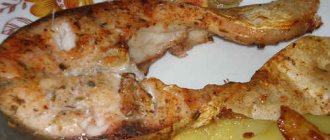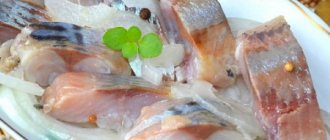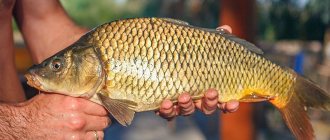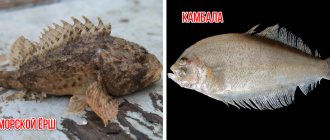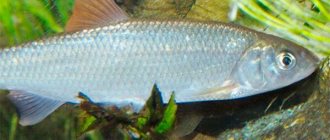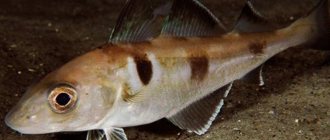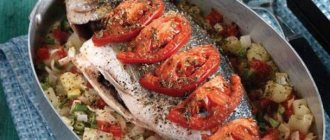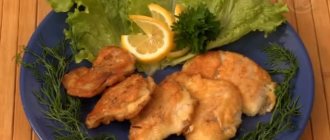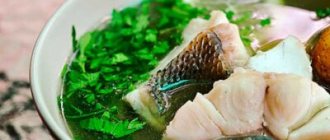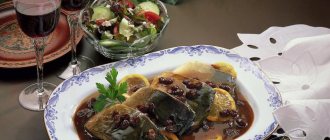Chinook salmon becomes the object of fishing less often than many other breeds of salmon fish, which is why it is found much less frequently on sale and is quite expensive. However, if you manage to purchase steaks or fillets of Chinook salmon, you should bake it. This cooking method allows you to preserve the maximum of nutrients contained in fish, while simultaneously obtaining an appetizing and tasty snack. You will like it no less than baked salmon, and it will look even brighter and more appetizing. Without much culinary experience, the cook runs the risk of spoiling the product. To prevent this from happening, you need to learn how to cook chinook salmon in the oven correctly. This process is not complicated, but has certain specifics.
Chinook - king salmon
Chinook salmon have all sorts of titles: royal and princely, but it is worth mentioning that the most luxurious “specimens” are still found not in American waters, but here, in the Far East, in the Kamchatka Territory.
Chinook salmon are born in clean rivers, like other salmon. Females lay a lot of eggs - up to 20,000 eggs, and they are larger than those of chum salmon - sometimes their size reaches 1 cm. Grown-up chinook salmon go to the seas and far into the ocean - to cold areas, and can live there for about 7 years, feeding on others fish, mollusks and crustaceans, and then return to their native rivers to give life to their offspring.
We don't catch much Chinook salmon here.
, and its commercial significance is small. The Americans are lucky here: they catch Chinook salmon in sufficient quantities, but in Russia - about 400 tons per year, and this is the maximum now. But we have organized sport fishing for Chinook salmon: fishermen come across specimens less than a meter long and weighing about 6-17 kg - these are “average” parameters. The luckiest ones can catch Chinook salmon weighing up to 30 kg. Not so long ago, this fish began to be bred specifically, in America and New Zealand, in natural reservoirs - for example, in the Great Lakes.
About the nutritional value, composition and benefits of chinook salmon
Chinook salmon is rich in protein - about 20 g per 100 g of product
; it contains many healthy fats containing fatty acids, including Omega-3. They are not synthesized in the body, but the need for them is enormous: the development and activity of the brain, normal growth and protection of cells, blood composition, etc.
Eicosapentaenoic and docosahexaenoic acids (EPA and DHA) make the value and benefits of Chinook salmon particularly high. Thus, EPA “supports” the immune system and blood vessels; thanks to it, the body produces prostaglandins - bioactive substances that protect us from the development of severe pathologies, and blood circulation always remains normal, and blood gets to where it needs to go through the vessels in a timely manner.
As for DHA, it is necessary for the health of nerve cells and eyes, and all other cells of the body maintain their healthy state thanks to it: toxins are eliminated without delay, and nutrition is supplied on time. In general, both of these fatty acids support the structure of cell membranes and the normal course of metabolic processes.
It is clear that regular consumption of chinook salmon could reduce the likelihood of developing many serious diseases: angina pectoris, atherosclerosis, arrhythmia, strokes and heart attacks, depression, etc. But consuming chinook salmon regularly is not so easy: it costs, at best, about 400 rubles per 1 kg - this is fresh frozen, and smoked - about 1,500 rubles.
And its caviar, which is considered a rare shortage on the gourmet food market, costs about 3,000 rubles per kg, and is not stored for too long - only about 3 months in packaged form, so it is not easy for the average Russian buyer to find a quality product.
Chinook meat contains vitamins A, E, C, D, K, group B (there are 8 or 9 of them); minerals - calcium, magnesium, sodium, potassium, phosphorus, chlorine, sulfur, iron, zinc, copper, manganese, selenium, chromium, fluorine, molybdenum, nickel. There are not many calories in Chinook salmon - about 150 kcal per 100 grams
.
It must be said that the chemical composition of any fish changes periodically: after all, the age of the fish, their physical condition, living conditions, etc. change. The sex of the fish also affects its composition: males have a predominance of certain substances, females have others, but the meat of any chinook salmon is always healthy and has high nutritional value, so it is worth eating in any form.
Both Chinook salmon meat and its caviar have a bright red (raspberry, dark pink) color. Although Chinook caviar is larger than other salmon caviar, its shell is very thin and delicate - that’s why it does not last long, and there is very little bitterness in the taste. Buying caviar, as already noted, is almost impossible, but some people are lucky: you can find it in expensive restaurants in the capital, get it from acquaintances, relatives or friends from Kamchatka, or buy it in Kamchatka yourself. Online stores also offer Chinook caviar, but most consumers are still hesitant to use their services - caution is really needed here.
Well, those who can afford to travel go directly to Alaska for Chinook salmon: according to reviews, the fishing bases there are well equipped and have everything you need for a comfortable holiday.
Chinook salmon: composition. What are the benefits of Chinook salmon? Chinook Salmon Recipes and Cooking – In the Moment
The salmon family includes many varieties of red fish, and Chinook salmon is one of these beautiful representatives. It is capable of gaining a lot of weight; in addition, it can be distinguished from similar representatives of salmon species by external characteristics.
Moreover, its meat is particularly healthy and has a distinct taste. Thanks to these characteristics, the meat of this fish is considered an excellent starting product for preparing all kinds of healthy and quite tasty restaurant dishes.
Chinook salmon, as one of the brightest representatives of the salmon family
Chinook salmon has a number of other names related to its importance. Thus, the Americans call the Chinook salmon “the king of salmon,” and the Japanese gave it an equally colorful name – “the prince of salmon.” Based on these names, it is not difficult to guess how valuable this fish is. In addition, the name indicates that this fish is cunning, smart, swift and strong.
Chinook salmon habitat
According to scientific definitions, Chinook salmon belongs to the freshwater species of the salmon family. Despite this, the fish spends the bulk of its life outside the boundaries of fresh waters and at a considerable distance from the places where it was born. This is due to a certain life cycle, which characterizes almost all representatives of salmon.
Chinook salmon is found between the western border of the Pacific coast of the United States and the north of the Japanese Islands, as well as in Kamchatka and the Kuril Islands.
In the fresh waters of British Columbia, Washington, on the territory of the Russian Federation, in the basins of the Anadyr and Amur rivers, a freshwater population of Chinook salmon is found.
Nowadays, artificial breeding of salmon species is increasingly being practiced, and Chinook salmon is no exception.
Chinook salmon are bred on artificially built farms located on the Great Lakes in the USA and reservoirs in New Zealand.
This approach is dictated by the modern living conditions of mankind, when the amount of fish caught is constantly increasing, due to which its quantity is decreasing.
Chinook fish: description
If we compare Chinook salmon with other species of the salmon family, Chinook salmon can be distinguished by their significant weight.
The average fish weighs from 6 to 17 kg, although some anglers managed to catch a specimen weighing up to 30 kg. The record weight of this fish was recorded at 60 kg.
The average length of the fish is from 85 to 115 cm, but sometimes there are individuals from 1.5 to 2 meters long.
External distinctive features are large stripes located between the head and its body. The color of the fish largely depends on the places where it lives and can have either a light gray color or a greenish-silver or olive color. The abdominal region of the fish and its sides have a silvery tint.
On the sides, above the lateral line and on the surface of the back, dorsal and caudal fins there are small dark dots. When the time comes to spawn, the Chinook salmon changes its color: there is a bright brown tint in the body area, and the head area darkens.
As a rule, most species of fish of this family radically change their appearance before the spawning period.
Chinook salmon can be distinguished from other species of this family by the small spots that are visible on the back, tail and fins of the fish. In addition, on the body of the Chinook fish there are no X-shaped spots and pink stripes characteristic of salmon along the body.
Life span and reproduction
The life cycle of Chinook salmon is divided into several stages:
- Birth in a freshwater river.
- Living in this place for two years.
- Moving to the sea and living there until 3-5 years of age.
- Returning to the places where she was born to continue her family line.
Males of certain species of this family, growing in length from 10 to 50 cm, may not leave their places, while reaching sexual maturity. They participate in the spawning process along with other males.
Chinook salmon spawn in small rivers, moving to permanent spawning grounds, covering up to 4 thousand kilometers.
The process of fish spawning can last for quite a long time: in normal natural conditions - from June to August, and in northern latitudes - from autumn to winter.
While in the river, the fish eats:
- All kinds of larvae.
- Insects.
- Not a big fish.
- Not large crustaceans.
When it moves to the seas, its diet consists of:
- Crustaceans.
- Cephalopods.
- Small fish.
- Plankton.
- Krill.
Composition of Chinook salmon meat
Chinook fish meat is characterized as particularly valuable due to the presence in it of all the necessary nutrients that ensure the normal functioning of the human body, as well as the ability to prepare various dishes due to its excellent taste. Chinook fish meat is rich in vitamins B1 and B2, as well as vitamins C, PP, K, E. In addition to vitamins, the meat contains a whole bunch of useful microelements, such as zinc, selenium, calcium, potassium, phosphorus, iron, magnesium, molybdenum , sodium, nickel, chromium, fluorine, etc.
Chinook salmon meat contains up to 20 g of protein per 100 g of product. Fatty acids choline and Omega-3, which are not reproduced by the human body, are also found in meat.
This applies to docosahexane (DHA) and eicosapentaenoic (EPA) acids, the function of which is aimed at strengthening cell membranes, which contributes to the correct implementation of metabolic processes in the human body.
Fish meat, including its caviar, is characterized by a high rate of digestibility, which makes it possible to absorb all the useful components as efficiently as possible. Thanks to these properties, fish occupies a special place in the human diet.
Chinook caviar is characterized by the presence of a bitter taste, and individual eggs reach a size of up to 6-7 mm. At one time, the fish can lay up to 14 thousand eggs.
The percentage of fat in the meat is very small and amounts to only 11-13.5%, which is somewhat less in comparison with the meat of other types of fish of the salmon family. The meat is characterized by a rich red color with a raspberry tint. Its meat tastes like salmon meat. With proper and competent preparation, Chinook salmon meat can turn out much tastier than salmon meat.
The energy value of Chinook fish meat is estimated at 146 kcal per 100 grams of product. These indicators can vary within small limits, depending on its habitat, age, gender, time of fishing, etc.
The benefits and harms of Chinook fish
By consuming Chinook salmon, you can achieve the following results:
- Prevent destructive and atrophic processes occurring in the central nervous system associated with age-related factors.
- Reduce the risks of developing sclerosis, Alzheimer's disease and dementia.
- Have a positive effect on the functioning of the cardiovascular system.
- Improve blood circulation processes in the body.
- Strengthen bone tissue, reduce the likelihood of blood clots, as well as osteoporosis.
- Ensure the normal functioning of the visual organs, optimize the activity of the nervous system with the generation of new nerve cells, ensure high-quality removal of harmful substances from the body, feeding the cells with full-fledged active substances.
- Maintain the tone of the vascular system, thanks to the secretion in the body of biologically active components that help protect the body from various pathologies of complex origin.
Contraindications for consuming Chinook salmon meat include the possibility of adverse reactions during pregnancy. Despite this, such reactions occur very rarely (1 in 250 cases), which cannot be attributed to the seriousness of this indicator. In addition, the consumption of Chinook salmon meat is limited to people suffering from chronic gastrointestinal problems.
Where and how to catch Chinook salmon
According to experts, fish are considered the most valuable when they have not yet begun to ascend the river to their spawning grounds. But there is a danger of its uncontrolled fishing, which can lead to a significant decrease in the population of this tasty and healthy fish.
Most fishermen note that Chinook salmon is a rather cunning and cautious fish. They claim that the fish choose parking areas that are difficult to reach from a fishing point of view.
Fish grown artificially contains more harmful substances, so catching it in such places is not recommended. In such cases, preference should be given to individuals caught in natural conditions.
Chinook salmon meat in cooking
The meat of this fish is not only healthy, due to the presence of vitamins and useful elements in it, but also tasty, which allows you to prepare healthy dishes of various categories from it. Dishes prepared from lightly salted chinook salmon are extremely appreciated.
As a rule, the meat is salted according to a special recipe, after which it is suitable for delicious cold appetizers, as well as for preparing salads. In addition to this cooking option, Chinook salmon meat can be marinated, smoked, grilled, etc.
In America, Chinook salmon meat is cooked on heated coals or bricks, which is considered a delicacy. There are fans of dried fish, especially balyk (fillet) of this fish.
When Chinook salmon meat is cooked with a high salt content, it is subsequently soaked and boiled, after which it is consumed as a snack.
How to deliciously cook Chinook salmon meat
The most delicious dish made from Chinook meat is lightly salted Chinook. To prevent the fish from losing a certain amount of its nutritional and beneficial properties, it is subjected to shock freezing. After the fish is caught, it is cut up and frozen in a special way directly on the fishing vessel, in refrigeration chambers.
Chinook salmon fried with green peas and buckwheat
Cooking steps:
- First of all, you should get rid of the scales and cut the carcass along the ridge, removing all the insides.
- The resulting fish fillet is cut into separate small pieces, salted and sprinkled with the juice of half a lemon, and also sprinkled with seasonings such as khmeli-suneli (others are also possible).
- At the next stage, the fish is marinated in the refrigerator while the buckwheat is prepared.
- Buckwheat is prepared in a frying pan by frying in vegetable oil with chopped onions. First of all, fry the onion until golden brown, after which buckwheat is added to it. All this is poured with water in a ratio of 1:3 and cooked over medium heat until cooked.
- The pickled chinook salmon is taken out of the refrigerator and fried in a frying pan on both sides, with the addition of a small amount of vegetable oil.
- Prepared buckwheat, fried fish and green pickled peas for decoration (and not only) are poured onto a plate.
Short tips
- You should not consume large amounts of Chinook salmon per day (more than 5 teaspoons) due to its high sodium content. The fact is that it binds fluid in the human body and, as a result, leads to stagnation and disruption of metabolic processes.
- Particular attention should be paid to the consumption of Chinook salmon meat or its caviar by pregnant women, as well as breastfeeding mothers. The presence of harmful substances, especially mercury, can affect the normal development of the fetus.
- Considering the fact that this fish, during its life, is capable of accumulating some harmful substances, and especially mercury, when buying it, it is better to give preference to medium and small-sized specimens.
Conclusion
Seafood, including fish from the salmon family, are considered valuable dietary products, and the presence of nutrients makes them indispensable when you need to lose weight.
Low calorie content and the presence of a sufficient amount of protein, which is easily absorbed by the body, indicate that seafood must be present in every person’s diet.
Source: https://vmomentte.ru/chavycha-sostav-chem-polezna-chavycha-recepty-i-prigotovlenie-chavychi.html
Chinook Salmon Recipes and Cooking
They say that Chinook salmon tastes like salmon, but it has less fat.
In terms of taste, it surpasses many salmon, and especially lightly salted Chinook salmon: it is eaten with pleasure just like that, added to salads and appetizers. Canned chinook salmon is also suitable for the same purposes, and salted fish is first soaked and then cooked in the same way as fresh frozen fish. The best way to preserve fresh Chinook salmon is shock freezing: freshly caught fish is cut up directly on floating factories and instantly frozen - everything useful, valuable and tasty is preserved “in its best form.” There are not many recipes with chinook salmon due to its rarity. So, if you already get your hands on a piece of good chinook salmon, try to cook it in a special way - for example, in the form of a kebab with mustard and honey.
About contraindications for Chinook salmon
You should not eat Chinook salmon if you are allergic to red fish, but if you have diseases of the intestines and pancreas, you can eat it a little.
True, there is never too much Chinook salmon - it is not cheap, and allergic reactions to it are extremely rare. Large Chinook salmon, and especially those raised in fish factories, can accumulate harmful substances.
Recipe “Fried Chinook salmon with buckwheat and green peas”
Ingredients for “Fried Chinook salmon with buckwheat and green peas” Chinook salmon – 1 kg buckwheat onions green peas Bonduelle vegetable oil juice of half a lemon seasoning khmeli-suneli
It's simple. Clean the fish from scales. Cut along the ridge into two parts and cut into pieces. Salt, sprinkle with lemon juice and sprinkle with suneli hops. While the fish is marinating, prepare the buckwheat. I first fry finely chopped onion in oil, add washed buckwheat, pour boiling water in a ratio of 1:3, add Vegeta and cook until tender. Meanwhile, our fish has already managed to marinate. In a heated frying pan, pour a little oil and fry the fish on both sides. Everything is as simple as shelling pears! Our dinner is ready! I added peas to the fish and buckwheat, as I love them very much.
Recipe - Chavachi
To prepare we will need:
1 kg. Chinook salmon roll - 50 g 100-200 gr. milk, 1 egg 1 kg onion 30 gr. beets 500 gr. carrots 50-100 gr. butter
Cooking method:
Clean the fish, cut the fillet from the vertebral bone. Divide the Chinook into large pieces and then fry in butter until half cooked. Pass the fillet through a meat grinder with raw onion and a bread soaked in milk. Add egg, salt, spices and mix well. Stuff the fish pieces with minced meat and trim the edges. Cut the onion into thin rings, finely chop the beets and carrots and place in a saucepan. Place pieces of stuffed fish on top and cover with water. Rinse the fish waste well, wrap it in cheesecloth and boil it along with the fish and vegetables. Add salt and spices to the pan and cook for about an hour. Before serving, pour the resulting sauce over the fish and garnish with pieces of vegetables. Chava roll
Mother of chum salmon, sister of coho salmon and rich distant relative of pink salmon, chinook salmon is, in fact, the largest and fattest fish in the Far East. Of course, it is also one of the most delicious. My cat and I tried it, buying it at the Vladivostok Lugovoy market and preparing it ourselves in a rented apartment. Here’s a recipe for “Chinook salmon rolls” (I came up with it on the way from the market, we brought it to life together, it’s delicious to the point of crackling in the ears!). Tasty and fatty red fish is bought (the fat of Chinook salmon, like salmon, is visible to the naked eye - it forms a noticeable whitish layer near the skin), cut into two parts along the body and prepares to remove the bones (well, the head and fins before that, the very of course, cut it off and scrape off the scales). Carefully remove the bones and get two large “sides” that need to be cut into pieces as a basis for future rolls. Then you need to start preparing the filling. It will include delicious seaside shrimp (you can, as an experiment, replace it with mussels), mayonnaise and grated cheese such as Egmont or Gouda (fat and soft). The main task when preparing the filling is to highlight the taste of shrimp, which you may not feel in the finished dish (due to the taste of the fish itself), and in this you have to show all your ingenuity by adding either finely chopped greens, or mushrooms, or both together. So, having prepared the filling, you wrap it in pre-salted and lightly beaten layers of fish (“beaten” sounds loud, because Chinook salmon is a very soft and tender fish, and your task is to make the layers a little thinner) and fasten the resulting rolls with a toothpick:- ) Lightly brush the top with mayonnaise and go to the oven! In about fifteen minutes, delicious, aromatic chinook salmon will be basking on your plate. Remove the toothpicks and garnish the finished dish with a few peeled shrimp and fresh red caviar.
Chinook salmon is truly a royal fish, superior in taste to all known types of salmon. Neither salmon, nor trout, nor chum salmon, nor coho salmon can compare with it. In Kamchatka, which is the only place in Russia where Chinook salmon is found, residents are well aware of the value of this type of red fish and are well aware of the recipe for preparing it at home.
In Kamchatka it is considered that frying chinook salmon or making fish soup from it is blasphemy. This fish should be either salted or smoked; only in this form the true taste of Chinook meat is revealed. Let's look at the most popular recipe.
Chinook fish - where does it live and how is it useful?
Chinook salmon lives in the Anadyr River, Kamchatka, Amur and northern Hokkaido. Very common along the American coast, in Alaska and in the Arctic. The taste of the fish is close to salmon, but at the same time it is less fatty and high in calories (148-150 kcal per 100 g), it can be used with dietary and gentle nutrition. First you need to know what Chinook fish looks like.
- The standard color scheme is bright silver flanks, white belly, and blue-green or olive back. Chaotically scattered dark spots covering the top of the body, tail and both fins. During the spawning period, light colors change to burgundy and pink.
- The fish has a very expressive appearance: a long body, ventral fins moved back, small scales.
- The sides of the carcass are compressed, the head and mouth are large, and the eyes are small. On the back there are two fins without spiny rays.
There are contraindications that are associated with individual intolerance to salmon products, gout, and pancreas problems. Regular consumption of chinook salmon prevents the accumulation of cholesterol plaques, reduces the risk of hypertension, diabetes, heart failure and the development of eye diseases. Meat and caviar contain many elements that are beneficial for the heart, blood vessels, vision, joints, muscles, and nervous system:
- polyunsaturated fatty acids;
- selenium;
- natural antidepressants;
- vitamins B9, B12, C, D, E, PP;
- phosphorus, calcium, iron;
- magnesium, potassium, sodium.
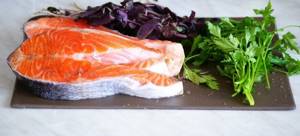
Chinook fish, the recipes for which are extremely simple and hassle-free. Knowing how to cook salmon or sockeye salmon, you can adapt your favorite dish for this fish, but the resulting treat will be much tastier. Chinook salmon is juicy, moderately fatty with dense but tender meat.
- Chinook salmon is easy to salt; you can use dry salting, marinade, and spices: dry herbs, some spices.
- Fish in soup, steamed, stewed with vegetables is delicious.
- Chinook salmon is baked in the oven in foil, a sleeve, under marinade or cheese. You can also use steaks and ready-made fillets.
- Fried Chinook salmon is good without breading. Cutlets made from rolled minced meat are incredibly tasty and juicy.
- Fish exhibits its qualities well as a main or delicious ingredient for salads, sandwiches, canapés, and appetizers. Thanks to its beautiful appearance combined with a delicate, dense structure, you can prepare mouth-watering dishes.
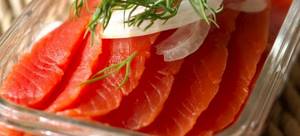
Having figured out what kind of Chinook fish, the first thing cooks do is salt the fillet. Due to the high fat content, it is advisable to salt the fish using the dry method, preserving the unique taste. Chinook salmon is not salted quickly - 2 days, and thanks to the addition of a small amount of alcohol it acquires a delicate structure and pronounced taste; vodka can be replaced with brandy or rum. For spicy salting, add dry dill, fennel seeds, bay leaf and pepper.
- fillet with skin – 1 kg;
- coarse salt – 5 tbsp. l.;
- sugar – 2 tbsp. l.;
- vodka – 60 ml.
- Rinse the fillet, dry with a paper towel and coat with vodka, leave to soak for 10-15 minutes.
- Mix salt and sugar.
- Rub the fillet with the curing mixture on all sides.
- Place skin side down in a glass or enamel bowl.
- Lightly salted Chinook remains under pressure for 40 hours.
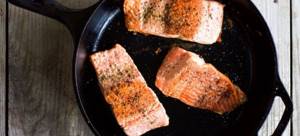
Having figured out what kind of Chinook fish it is, even a teenager can fry it in a frying pan. Frying 1 kg of fish will take no more than 20 minutes. Both fillets and steaks will do. Many chefs do not recommend mixing different types of oils for frying. Fats have different boiling points; when mixed, they form carcinogens faster, and they are absorbed into foods more strongly. Therefore, it is better to use regular vegetable oil without bitterness.
- Chinook salmon steaks - 1 kg;
- oil for frying;
- salt and black pepper;
- sweet pepper, tomato – 1 pc.;
- lettuce and basil, pesto for serving.
- Steaks, rinse, dry with a towel.
- Sprinkle with salt and pepper.
- Fry in a grill pan with olive oil for 7 minutes on each side.
- Chinook salmon fried in a frying pan and sprinkled with lemon juice.
- Next, fry the pepper rings and tomato slices.
- Serve with lettuce and roasted vegetables, topped with pesto sauce.
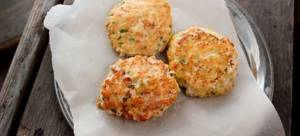
This fish does not have small bones, so the fillet is perfect for making chinook fish cutlets; the recipe below is very simple. You don’t need to add lard to the minced meat to make the dish juicy; onions and garlic are enough for taste and aroma. From half a kilogram of fillet you get about 8-10 cutlets. Breadcrumbs, ground chips and flakes are suitable for breading.
- Chinook salmon fillet without skin - 500 g;
- onion - 150 g;
- garlic - 3 cloves;
- yolk - 1 pc.;
- breading - 5 tbsp. l.;
- bread - 100 g;
- water - 50 ml;
- salt pepper.
- Soak the bread in water.
- Pass the fillet through a meat grinder.
- Twist the soggy bread, squeezing out the water, onion and garlic. Add yolk, salt, pepper and mix.
- Make cutlets and bread them.
- Fry on both sides.
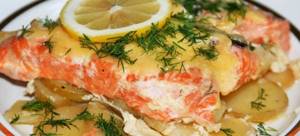
Baked chinook salmon in the oven in foil goes well with potatoes, which easily absorb fat and turn out very tasty. This fish goes well with onions, carrots and tomatoes. Before baking, you don’t have to lubricate with sauces or limit yourself to low-fat yogurt. Thanks to the fat, an appetizing crust will appear. You can use thyme, rosemary and lemon spices for fish..
- Chinook salmon – 1 kg;
- potatoes – 400 g;
- onions – 2 pcs.;
- carrots – 1 pc.;
- pepper, salt;
- bay leaf – 1 pc.;
- lemon – 0.5 pcs.;
- yogurt – 100 g;
- dill – 20 g;
- vegetable oil – 10 ml.
- Rub the fish with salt and pepper and sprinkle with juice.
- Cut the onion into half rings, carrots into strips.
- Boil the potatoes until half cooked. Cool and cut as desired.
- Place the fish on a baking sheet. Place potatoes, cover with chopped onions and carrots.
- Mix sour cream with salt and dill and pour over fish.
- Bake for 50 minutes.
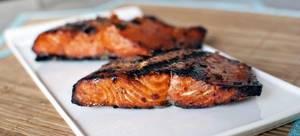
The aromatic chinook salmon recipe offered below is a delicious treat with a smoky aroma. To make the fish juicy, it is recommended to bake it in foil. Then the pulp is steamed and soaked in spices and herbs. To make the fish more tender, add lemon slices. It is not recommended to marinate for more than half an hour, otherwise the pulp will soften too much. For piquancy, you can mix lemon juice with orange juice.
- chinook salmon – 6 steaks;
- lemon – 2 pcs.;
- sour cream – 3 tbsp. l.;
- onions – 2 pcs.;
- pepper – 1 tsp;
- salt – 1 tsp;
- vegetable oil – 3 tbsp. l.
- Mix seasonings and rub all steaks.
- Sprinkle with lemon and leave for half an hour.
- Chop the onion and place in packages with the steaks.
- Add a couple of lemon slices.
- Spread with sour cream and seal in foil.
- Bake on coals for 30 minutes.
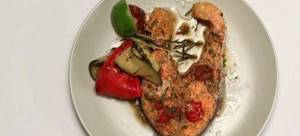
Delicious aromatic chinook salmon - a recipe that is ideal for dinner. The fish has tender and dense flesh that does not lose its structure during cooking and retains its elasticity. The proposed option involves serving it with vegetables with which the Chinook salmon was stewed. It is appropriate to supplement with slices of lime and pour over the resulting juice.
- chinook salmon (fillet) – 700 g;
- tomatoes – 4 pcs.;
- lime – 1 pc.;
- olives – 150 g;
- garlic – 1 clove;
- salt, pepper, oregano, thyme and thyme
- olive oil – 4 tbsp. l.

Fish lovers will undoubtedly enjoy Chinook salmon soup or fish soup cooked with the addition of a simple and cheap set of vegetables. For thickness, you can supplement the composition with rice or millet. The broth will be richer if you fry the vegetables before adding them to the pan. The fish soup is prepared from the head, but it is better to add other bone parts: ridge, tail and flesh.
- bone parts of chinook salmon – 300 g;
- potatoes – 1 kg;
- onions – 2 pcs.;
- carrots – 2 pcs.;
- oil;
- salt, pepper, bay, herbs.
- Boil the fish for 30 minutes, adding one onion and one carrot each.
- Strain the broth.
- Add potatoes, and after 10 minutes sauté vegetables, fish, and all seasonings.
- Cook for 15-20 minutes, serve with herbs.

Salted red Chinook fish is an excellent ingredient for light, low-calorie salads. The appetizer is prepared from vegetables, iceberg leaves, and celery adds freshness. Supplemented with grated carrots, beets, and chopped cucumber, the salad will become brighter and more original. Oil is added to taste; if it seems that the dish lacks juiciness, you can only add lemon juice when serving.
- celery stalks – 2 pcs.;
- fresh cucumber – 1 pc.;
- salted chinook salmon – 150 g;
- beets and carrots – 0.5 pcs.;
- iceberg lettuce;
- salt, pepper, oil, lemon, olives.
- Tear the salad with your hands, mix with tuna, grated carrots, beets and chopped celery.
- Divide the mixture into plates in portions, add cucumber slices, chopped olives and lemon slices.
- Season with salt, pepper, oil and lemon juice.
Good afternoon, dear readers! Cooking chinook salmon is very simple and quick, if you know how to cook sockeye salmon, then all recipes are suitable for king salmon, but the dishes will turn out more tasty.
The meat of this fish is juicy, dense, moderately fatty and tender. Cooking is a pleasure!
Preparation:
Every third recipe says that before salting fish, you should not wash it. The salting technology is really based on replacing plain water with salt water (2-3%), because... plain water is a medium for the spread of bacteria, which is highly undesirable when salting. But if we decide to salt fish at home, this can be neglected. Especially if you have a whole carcass, you definitely need to wash it and you shouldn’t be afraid of anything.
If the fish is gutted, you can wash the inside with a weak saline solution at room temperature, then let the water drain and wipe dry with dry gauze (rag). Personally, I wash my house under simple running water and in 15 years I have never had any problems associated with this. The main thing is not to wash it in warm water, because... this will have a detrimental effect on the taste.
Chinook salmon cutting
Any cook who has tried to salt fish at least once will confirm that the most difficult thing is preparing the fillet. I would like to point out right away that it is very important to have a sharp knife, otherwise it will be a disaster and you will suffer. It is also convenient to use scissors when cutting. I make 2 preparations from whole chinook salmon, one for soup, the other for salting. The head and tail are cut off.
The fins are cut with scissors; I cut them with a 3-5 cm piece of meat (in the photo), because... These are the fatty parts of fish, which definitely won’t hurt your ear. The abdomen is cut open and all the insides are removed. It is important to pay attention to the strip of blood along the entire spine; it must be removed, otherwise poisoning is possible. Next comes the most difficult part: an incision is made along the ridge and the spine is removed along with the ribs. If the chinook salmon has already been lying down and the meat is quite soft, then everything is more difficult, it is better to cut it into 2 layers, on the first layer the spine with all the ribs should be easily stretched out with pliers, from the second layer you will have to remove the bones individually, with pliers or by prying them with a knife (if you are too lazy, you can remove the bones with a long knife, simply cutting them along the inside of the ribs, along with a small layer of meat, in the photo I did this, because I have an abundance of Chinook salmon).
As a result, we should have 2 sets
The first one is on the ear: head, tail, fins, I also left a small piece of meat from the tail part, because the ear should also contain at least a little meat besides the broth, and I don’t have any other fish for this.
We will now salt the second one: exclusively fillet on the skin, without bones
Recipe for “Lightly salted Chinook salmon at home”
First of all, we kick out the cat, who was freaking out while I was jumping with the camera, and decided that it was covered especially for him (animal lovers, please don’t worry, he will get it too, but later).
Cut the fillet into equal pieces, layer thickness, 10-15 centimeters wide. Making the mixture for salting:
Mix salt and sugar 3 to 2 (chinook “loves sugar”, I will soon publish a recipe for “royal salting”, which is dry and most suitable for this type of salmon). Add seasoning for salting fish, I usually take two different types. One just for fish, the second specifically for red fish. If there are no seasonings, it will be enough: salt, sugar, pepper and dried herbs (parsley, dill).
Knead the mixture so that there are no lumps of salt and mix thoroughly. As stupid as it may sound, careless cooks often end up with fish that is sweet on one side and over-peppered on the other precisely because of such a trifle.
Sprinkle the mixture over our fillets on both sides. You shouldn’t skimp on salt, but it’s also not advisable to drown fish in it. The phrase “the fish will take as much as it needs” is definitely not suitable for this type of salting, especially for tender Chinook salmon. In addition, salt is needed to absorb excess moisture, and not to impart a special taste; chinook salmon is fine without it.
We take a pan (bucket, barrel, etc.), if you salt the fish so that it comes out lightly salted, you don’t need to fill the bottom with salt. We lay out our fillet pieces in layers, throwing 2-3 bay leaves between the layers. It is important to remember that the layers are laid out with the scales facing down; if the meat touches, it will stick together.
For freezing, the fillet is cut into thin slices, without skin, laid out in layers in a jar, ground pepper is added between the layers and the whole thing is filled with sunflower oil. The jar goes into the freezer, where it will definitely not spoil within a year. The main thing to remember is that salted fish should be defrosted at a low temperature; it is advisable to move the jar from the freezer to the refrigerator in advance for 5-6 hours and there it will thaw without releasing water and maintaining the original appearance of the product.
So, let's remember the important points:
1. We only take frozen Chinook salmon; if you have fish from the shore, then we freeze it for at least 3 days. 2. When cutting, we use a sharp tool. 3. If you are going to salt chinook salmon at home, be sure to wash it with cold water, preferably salted. 4. When gutting fish, pay special attention to the bloody groove along the spine, from the abdomen. 5. It’s better to fillet any salmon when it’s frozen, so it’s easy to remove the spine with all the rib bones at once. 6. If we want the Chinook salmon to be lightly salted, we don’t get carried away with salt. In this case, we use only coarse salt. 7. We select an oppression that is 2 times greater than the weight of the prepared fillet (in my case, 3.6 kg of fillet, eight kilogram oppression). Without pressure, the fish takes much longer to salt, and we risk getting a product with a flavor. 8. Defrost the fish after storing it in the freezer in a cool place.
Chinook salmon is a wonderful fish that simply has no equal. Unfortunately, due to its size and the enormous volumes of red caviar for salmon per individual, it has been practically exterminated in Russia. But if you still manage to purchase this fish and salt it as recommended in this recipe, you will definitely not be disappointed.
Chinook salmon are the largest member of the Pacific salmon and the largest freshwater fish in the Northeast. The habitat of Chinook salmon is quite extensive: from the islands of Hokkaido and Kamchatka to the rivers of Washington and the Aleutian Islands. The size of chinook salmon is impressive - the average size of adult individuals is around 90 cm, but there have been cases of catching truly gigantic fish weighing more than 60 kg. It’s not for nothing that the Americans call Chinook salmon with the Indian word “Chinook” or “king salmon,” and the Japanese call it “the prince of salmon.”
In American films you can often meet an avid fisherman who dreams of catching a huge salmon in the nearest river, and so, such heroes are hunting for Chinook salmon.
The taste of chinook salmon is excellent and can only compete with salmon. But not the same salmon, under the guise of which we were recently offered Norwegian salmon in stores, but that very wild Salmo salar, passing through the rivers of the Murmansk coast and the White Sea.
True, chinook salmon is a little less fatty, but just as tender and melts in the mouth, which is why chinook salmon dishes turn out simply amazing. Today we will cook salted chinook salmon.
Due to its high fat content, it is difficult to over-salt this fish; it turns out rather lightly salted, which allows it to be used not only as a delicious appetizer, but also as the main ingredient for making sushi and rolls.
If there is a truly “royal” fish, it is definitely the Chinook salmon. Recipes for its preparation are not varied due to its rarity, but its beneficial properties are incredibly great. She managed to win the hearts of gourmets all over the world.
Chinook salmon fillet
Beneficial features
The nutritional value of Chinook salmon is high. At the same time, its usefulness surpassed all other sea fish.
Firstly, it is rich in protein: 100 grams contain as much as 20 grams. squirrel. It can more than become an element of dietary nutrition, since the percentage of fat in it is significantly less than other salmon. Secondly, Chinook salmon contains all the vitamins and microelements necessary for the body. Its regular consumption can reduce the risk of dangerous diseases (heart failure, strokes, depression and much more). Thirdly, it normalizes the functioning of the brain (which is especially important for people whose work is associated with active mental activity) and internal organs, and also prevents the appearance and development of quite serious diseases.
Such fish is a real vitamin “boom”. It is not surprising that its use is recommended by all experts. In its meat you can find:
vitamins A, B, C, E, K copper zinc manganese magnesium iron phosphorus potassium
In addition, Chinook salmon caviar can improve vision, improve blood circulation, as well as strengthen bone tissue and reduce the risk of blood clots.
There are no serious contraindications to eating fish. These include only individual intolerance to meat or an allergic reaction to caviar. People suffering from diseases of the gastrointestinal tract should be wary of Chinook salmon.
You should also not abuse it. Despite all the benefits, a large amount of fish every day can cause deterioration of digestive processes.
Chinook salmon is not a cheap fish, but it won’t hurt to dilute your usual daily diet at least once a month. The body will say a huge “thank you” for this by improving the functioning of the immune system.
Use in cooking
Chinook salmon meat is considered valuable. You can prepare many dishes from it, and due to the nutrients and elements it contains, it becomes very useful. Therefore, when considering which is tastier - chinook salmon or salmon, experts assure that it is definitely the former, although in many ways their taste is similar.
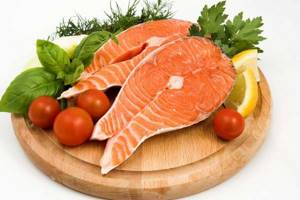
The composition includes the following essential vitamins: B1, B2, C, K, E, PP, as well as iron, phosphorus, selenium, zinc, potassium, calcium, fluorine and nickel. In addition, it also contains essential fatty acids Omega-3 and choline, that is, necessary for the human body, but cannot be formed in it. Male meat is considered healthier.
Chinook fillet differs from other salmon in its relatively low fat content (no more than 15%), so it is quickly absorbed by the body and does not lead to the appearance of extra pounds or centimeters. Fish caviar also has these same properties. The percentage of protein is approximately 20%, which is why only ½ kg of meat contains the daily dose required by a person.
The calorie content of chinook salmon is low - 100 g contains about 146 kcal (for comparison: 100 g of pork - 259 kcal, and beef - 187 kcal). Caviar is higher in calories - 250 kcal per 100 g. Research has proven: the brighter the meat looks, the redder it is, the more krill was included in the food of a particular fish.
Beneficial features
When considering where Chinook salmon lives and how it is useful, it is necessary to study its composition, as well as the effects it has on the human body. Regular consumption of red meat will have a beneficial effect on mental activity and help improve memory. In addition, the following properties of “king salmon” have been scientifically proven:
- Thanks to the fatty acids it contains, it helps stabilize the nervous system and has a beneficial effect on the heart and blood vessels.
- It strengthens the immune system, so it is recommended for children to eat this fish in the fall and spring, when the risk of infectious and viral diseases increases.
- Thanks to the content of docosagesaenoic acid, it helps improve vision and cleanse the body of toxins and breakdown products, including old ones.
- It is considered a powerful prevention of heart attacks and strokes, arrhythmia, angina pectoris, senile dementia and Alzheimer's disease.
- It contains tryptophan, a special amino acid that, when ingested, stimulates the production of the joy hormone, serotonin, which is why Chinook salmon is considered an excellent means of combating depression.
- Helps slow down the aging process of the body.
- Helps cleanse the blood.
Due to the high amount of calcium it contains, Chinook salmon helps reduce the risk of bone fractures and has a beneficial effect on the condition of hair, teeth and nails. However, with such an impressive list of positive qualities, it should be remembered that pregnant women should eat fish with extreme caution.
They need to agree on this issue with a doctor, and if they have not tried chinook salmon before conception, now is not the best time for experiments; they should wait until breastfeeding is completed and only after that decide on a new dish. Another contraindication is chronic diseases of the gastrointestinal tract.
Two simple recipes to note for the housewife
Chinook salmon is cooked extremely rarely, however, despite this, there are many interesting and tasty recipes. Let's consider the two easiest and, at the same time, delicious.
Chinook salmon with vegetables in the oven
Chinook salmon is a delicious fish. Especially if you cook it according to the original recipe, with vegetables in the oven. What you need for a tasty result:
chinook steak (6 pcs.) tomato (5 pcs.) one medium onion cauliflower (1 head or 300 gr.) bell pepper (2 pcs.) olive oil and soy sauce (3 tbsp. each) half a lemon large greens sea salt spices
Thanks to the vegetables, the result is excellent, juicy Chinook salmon. Oven cooking recipes may differ in ingredients, but the technology remains the same.
Chinook salmon in the oven
So, let's begin the process of creating a culinary masterpiece. The first thing we pay attention to is the steaks. They must be prepared. If the fish is whole, then it must be divided into even pieces, after gutting it.
It is worth saying that its scales are very small, so most indigenous peoples of the North prefer not to peel them.
Take a deep bowl where we will prepare the dressing. To do this, combine soy sauce, olive oil, lemon juice and prepared spices. After the marinade is ready, immerse the fish in it, sprinkled with sea salt.
While the Chinook salmon is marinating, it's time to get started on the vegetables. Sweet peppers and onions need to be cut into rings. We do the same with tomatoes: chop them into circles. We separate the cauliflower into inflorescences and pour boiling water over them thoroughly to remove the bitterness.
Place vegetables on a baking sheet lined with foil in even layers. The sequence is not important. They need to be drizzled with olive oil and sprinkled with a small amount of spices.
Place pieces of chinook salmon on the “vegetable bed” and wrap foil around the edges. In an oven preheated to 180-200 degrees, such a fish should be baked for 20 minutes. Serve in portions, garnished with a small amount of herbs.
Stuffed Chinook
Another interesting recipe, actively used by chefs, will allow you to prepare the “king of salmon” in an original way. What is needed for this:
1 kg chinook salmon 50 gr. fresh bread 150 ml milk one egg 1 kg onion one small beet 0.5 kg carrots 80 gr. butter
Prepare the fish as in the first recipe. Then we separate the fillet from the bone and pass it through a meat grinder along with two onions. Add a piece of bread, previously soaked in milk, and an egg to the resulting minced meat. Add salt and mix.
Cut the remaining chinook into pieces and lightly fry in butter. Stuff each piece with the resulting mass. Cut the rest of the onions into rings, grate the beets and carrots on a coarse grater.
Place in a saucepan with a wide bottom. Place pieces of stuffed fish on the resulting “pillow”. There should be exactly 1 cm more water.
Cook for about an hour over medium heat. Season with salt or pepper if necessary. Delicious stuffed fish is ready!
Stuffed Chinook
As you can see, chinook salmon is prepared not only easily, but also quickly. The result will definitely please both household members and possible guests.
At what temperature and for how long should I bake?
It doesn’t take much time for the Chinook salmon to cook. Steaks are cooked at a temperature of 180 degrees for 25-35 minutes depending on their size, at a temperature of 200 degrees - 20-30 minutes.
Medium pieces of fillet (weighing 0.2-0.3 kg) are baked for the same amount of time as steaks. If fillet pieces weigh less than 200 g, then they need to be baked for 5 minutes less than large ones. Large pieces of fillet weighing about 0.5 kg should be cooked 5-10 minutes longer.
Sometimes the cooking time of a dish is affected by its composition, since some of the ingredients may require longer cooking. In order to avoid mistakes and get the expected result, it is advisable to focus on the recommendations that accompany a specific recipe.
Salting Chinook salmon at home
Many people don’t even realize how appetizing Chinook fish can be. Pickling recipes from skilled chefs will correct this shortcoming. So, for the classic method you will need to prepare:
1 kg chinook salmon 1 liter of clean water 90 gr. salt allspice bay leaf tbsp. l. ordinary table vinegar vegetable oil (50 ml). medium bulb
First you need to cut the fish. We get rid of the head, entrails and bones. Many people prefer to leave the bones: it takes less time and effort.
However, it is better to do this right away than to suffer with the bones at the festive table later. Cut the finished fillet into small slices and place neatly in a bowl.
Now let's start preparing the brine. Pour 0.5 liters of water into a container and add salt. Stir until it is completely dissolved. Fill the fish with salt water and place under a small press. This will prevent it from floating. We leave everything on the table for an hour and a half.
When the time is up, drain all the water, and instead fill the fish with a glass of water with vinegar diluted in it. Let it sit for another 5 minutes, after which this filling must be removed.
Cut the onion into rings or half rings. Add 2 bay leaves, oil and a few peppercorns to it. Pour everything into the fish and mix well. Lightly salted chinook salmon is ready. This method of salting does not take much time and does not require huge financial costs. What else does an enterprising housewife need?
There is another interesting, simpler method for salting chinook salmon at home. There are very few ingredients and all are available:
1 kg chinook salmon 120 gr. salt two packs of pepper (peas and regular) two bay leaves
The first step is preparing the fillet. We clean the fish of all excess. Rinse well.
Bring 0.5 liters of water to a boil. Here we throw salt, allspice and bay leaf. So the brine is cooked for another 5-7 minutes over low heat, after which it is removed from the stove and cooled to room temperature.
Place the Chinook salmon fillet into a container and fill it with the resulting brine. Cover and leave to steep in a cool place for 10-15 hours. Delicious fish is ready.
If long-term storage is required, then all the pieces must be poured with vegetable oil and then pour in 1 tsp. table vinegar dissolved in a glass of water. Mix everything well, place in a jar and close tightly.
The process of salting fish is fascinating and interesting. Even the most fastidious gourmet will like this chinook salmon.
How to salt red fish can be seen in the video:
There are several secrets, armed with which you don’t have to worry about the quality of the finished Chinook fish:
The right choice is a 50% guarantee of a quality dish. When buying fish in a store, you need to make sure that it has not been frozen before. This is easy to do by eye: the Chinook salmon flesh should not be watery and have a dense, soft structure. If you decide to fry chinook salmon in a frying pan, then you should do it in a well-heated frying pan and not for long. This will allow a crust to appear, which will retain all the juices inside the fish. If you keep it on the fire, the fat will evaporate, and the result will be dry and completely unattractive. Chinook salmon itself has a rich flavor. When baking it, you don’t need to use a huge amount of spices and seasonings. You just need to highlight the taste with lemon slices and the result will be juicy, tasty fish with a unique aroma. When salting, you should also not overuse spices. Many cooks categorically refuse to use even pepper, not to mention multiple seasonings. On the other hand, if funds allow, you can experiment and get interesting results. The only exception is paprika. She will completely ruin the Chinook salmon. But lemon zest can highlight the taste. Need lightly salted fish quickly? A little more sugar and it will absorb the brine faster. However, it is better to eat such chinook salmon right away. It is stored much worse. Finally, not everyone knows how to properly cut fish. To easily remove the ridge, you need to make a cut along it, as well as two at the very base of the tail. Now, with a slight movement, the sirloin is removed from the bones.
Knowing all the nuances of choosing and preparing chinook salmon, an experienced housewife can always prepare a wonderful dish with minimal effort and expense.
Chinook salmon is one of the most expensive seafood on the market today. Despite this, its popularity is only increasing every year.
It has not only excellent taste, but also a lot of useful properties that have a beneficial effect on the general condition of the body. Salting and cooking Chinook fish is a simple and fun process that leads to amazingly tasty results.
Noticed a mistake? Select it and press Ctrl+Enter to let us know.
Beauty and Health Health Nutrition Fish
Pacific salmon are known among fishermen and chefs for their unique properties and qualities. Fishermen are interested in catching them, and it is not surprising: for example, the size of chinook salmon reaches 1-1.5 m, and sometimes almost 2 m
. It can weigh more than 60 kg - having caught such a Chinook salmon, you can gain serious fame among your fellow fishermen.
Chinook salmon in cooking
In cooking, a certain type of salted fish, lightly salted Chinook salmon, which is used as a cold appetizer and for salads, is especially valued. Marinating, smoking, and grilling fish are practiced.
. In some American states, this fish baked on heated bricks or coals is considered a delicacy and a specialty of restaurants.
Among gourmets, the dried fillet of this fish (balyk) is very famous. For fish with a high salt content, soaking is recommended, followed by boiling and use as a snack.
Is Chinook salmon tasty and how is it prepared?
The most delicious dish of Chinook salmon is considered to be lightly salted. For this purpose, shock freezing is used, which preserves the beneficial substances of the product as much as possible. It consists in the fact that immediately after catching the fish, they cut it up, gut it and freeze it instantly right on a floating vessel in special refrigerators.
Recipe: fried chinook salmon with green peas and buckwheat
- First of all, the fish is cleaned of scales, cut into pieces along the ridge, and its entrails are removed.
- One kilogram of fish fillet is cut into small pieces, salted and generously moistened with the juice of half a lemon and sprinkled with suneli hops seasoning.
- After this, the fish is sent to the refrigerator, where it is marinated while the buckwheat is cooking.
- Buckwheat is prepared by frying finely chopped onions in a frying pan with vegetable oil, after which, when the onions acquire a golden hue, pre-washed buckwheat is added to it. The resulting mass is poured with boiling water (1:3) and cooked over medium heat until the buckwheat is ready.
- The marinated fish is taken out of the refrigerator and fried in a small amount of vegetable oil with a well-heated frying pan on both sides.
- Cooked buckwheat, fried fish and green pickled peas are placed on a plate to decorate the dish.
Chinook - king salmon
Chinook salmon have all sorts of titles: royal and princely, but it is worth mentioning that the most luxurious “specimens” are still found not in American waters, but here, in the Far East, in the Kamchatka Territory.
Chinook salmon are born in clean rivers, like other salmon. Females lay a lot of eggs - up to 20,000 eggs, and they are larger than those of chum salmon - sometimes their size reaches 1 cm. Grown-up chinook salmon go to the seas and far into the ocean - to cold areas, and can live there for about 7 years, feeding on others fish, mollusks and crustaceans, and then return to their native rivers to give life to their offspring.
We don't catch much Chinook salmon here.
, and its commercial significance is small. The Americans are lucky here: they catch Chinook salmon in sufficient quantities, but in Russia - about 400 tons per year, and this is the maximum now. But we have organized sport fishing for Chinook salmon: fishermen come across specimens less than a meter long and weighing about 6-17 kg - these are “average” parameters. The luckiest ones can catch Chinook salmon weighing up to 30 kg. Not so long ago, this fish began to be bred specifically, in America and New Zealand, in natural reservoirs - for example, in the Great Lakes.
Description and features of fish
In the specialized literature you can find various names for this fish. Thus, American fishermen often call it king salmon, and Japanese fishermen - the prince of salmon, all this speaks of the undoubted commercial value of chinook salmon. The distinctive features of the sea dweller include the following:
- Impressive size. The average weight varies from 5 to 18 kg, however
- Some lucky fishermen managed to catch specimens weighing up to 30 kg. And the recorded record figure is more than 60 kg.
- The length of the fish is also impressive - from 80 cm to 2 meters. The body is powerful, top-shaped. The head is large. It is interesting that muskyling, a representative of pikes, can also grow to similar sizes.
- Between the body and head of the Chinook salmon there are large dark stripes, which also distinguishes it from other salmon.
- The color is determined by the environmental conditions in which the fish lives. It can be either olive or light gray, with a greenish tint or silver.
- There are dark spots on the back, sides, caudal and dorsal fins. At the same time, the pink stripes characteristic of other salmon are absent on Chinook salmon. This way you can distinguish it from salmon and salmon.
Life expectancy is short, rarely exceeding 7 years. At 3 years old, females become sexually mature and ready to spawn.
Habitat
Such large fish are found both in the seas and in fresh waters, and their diet largely depends on where exactly they live. Thus, in fresh water bodies, Chinook salmon stop eating plankton, squid and fry, switching to river crustaceans and larvae.
It is customary to identify several main areas where fish are found:
- Coast of the USA. It was here that it was possible to catch record holders among Chinook salmon in size.
- Kamchatka and the Kuril Islands of Russia. There are a lot of fishing spots here, a visit to which will bring you a rich catch.
- The Japanese islands, namely their northern part.
Freshwater populations are found in the Amur and Anadyr basins, as well as in individual reservoirs of British Columbia. It is now common to create so-called fish farms, where Chinook salmon are raised under artificial conditions. In particular, such breeding is present in New Zealand and the USA.
Life cycle specifics
Red Chinook salmon goes through several stages of its life cycle, periodically moving from fresh waters to sea waters and back. Thus, it hatches from eggs only in freshwater bodies of water, where it lives until it reaches two years of age. Next, the fish moves to the seas, where it will live for up to 3-5 years, feeding on the local fauna. To spawn, it returns to fresh water again, and can travel a distance of more than 4 thousand km.
Spawning itself is a rather lengthy process; it can last from June to August, and in more northern areas - from autumn to winter. Reproduction occurs only once in a lifetime, and due to the serious hormonal changes that occur in the body of males, many fish do not live to see 7-8 years.
It is interesting that the first description of the largest salmon was found in 1701, when V. Atlasov, visiting Kamchatka, was struck by the impressive size of the red fish, which looked very similar to salmon. Catching Chinook salmon is quite difficult, since it is a very cunning species that prefers to rest in places that are difficult for anglers to reach.
Therefore, its price is high - about 400-500 rubles. for 1 kg. You can buy it both at retail outlets and in specialized VKontakte groups created by experienced fishermen. Smoked fish is even more expensive, its cost often exceeds 1,500 rubles.
About the nutritional value, composition and benefits of chinook salmon
Chinook salmon is rich in protein - about 20 g per 100 g of product
; it contains many healthy fats containing fatty acids, including Omega-3. They are not synthesized in the body, but the need for them is enormous: the development and activity of the brain, normal growth and protection of cells, blood composition, etc.
Eicosapentaenoic and docosahexaenoic acids (EPA and DHA) make the value and benefits of Chinook salmon particularly high. Thus, EPA “supports” the immune system and blood vessels; thanks to it, the body produces prostaglandins - bioactive substances that protect us from the development of severe pathologies, and blood circulation always remains normal, and blood gets to where it needs to go through the vessels in a timely manner.
As for DHA, it is necessary for the health of nerve cells and eyes, and all other cells of the body maintain their healthy state thanks to it: toxins are eliminated without delay, and nutrition is supplied on time. In general, both of these fatty acids support the structure of cell membranes and the normal course of metabolic processes.
It is clear that regular consumption of chinook salmon could reduce the likelihood of developing many serious diseases: angina pectoris, atherosclerosis, arrhythmia, strokes and heart attacks, depression, etc. But consuming chinook salmon regularly is not so easy: it costs, at best, about 400 rubles per 1 kg - this is fresh frozen, and smoked - about 1,500 rubles.
And its caviar, which is considered a rare shortage on the gourmet food market, costs about 3,000 rubles per kg, and is not stored for too long - only about 3 months in packaged form, so it is not easy for the average Russian buyer to find a quality product.
Chinook meat contains vitamins A, E, C, D, K, group B (there are 8 or 9 of them); minerals - calcium, magnesium, sodium, potassium, phosphorus, chlorine, sulfur, iron, zinc, copper, manganese, selenium, chromium, fluorine, molybdenum, nickel. There are not many calories in Chinook salmon - about 150 kcal per 100 grams
.
It must be said that the chemical composition of any fish changes periodically: after all, the age of the fish, their physical condition, living conditions, etc. change. The sex of the fish also affects its composition: males have a predominance of certain substances, females have others, but the meat of any chinook salmon is always healthy and has high nutritional value, so it is worth eating in any form.
Both Chinook salmon meat and its caviar have a bright red (raspberry, dark pink) color. Although Chinook caviar is larger than other salmon caviar, its shell is very thin and delicate - that’s why it does not last long, and there is very little bitterness in the taste. Buying caviar, as already noted, is almost impossible, but some people are lucky: you can find it in expensive restaurants in the capital, get it from acquaintances, relatives or friends from Kamchatka, or buy it in Kamchatka yourself. Online stores also offer Chinook caviar, but most consumers are still hesitant to use their services - caution is really needed here.
Well, those who can afford to travel go directly to Alaska for Chinook salmon: according to reviews, the fishing bases there are well equipped and have everything you need for a comfortable holiday.
